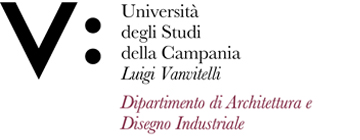Antonella VIOLANO
Insegnamento di TECNOLOGIE E MATERIALI PER IL FASHION DESIGN
Corso di laurea in DESIGN PER LA MODA
SSD: ICAR/12
CFU: 6,00
ORE PER UNITÀ DIDATTICA: 48,00
Periodo di Erogazione: Primo Quadrimestre
Italiano
| Lingua di insegnamento | ITALIANO |
| Contenuti | L’approccio culturale stimolerà approfondimenti specifici e letture trasversali relativamente agli aspetti legati a: |
| Testi di riferimento | Consigliati/Recommended book |
| Obiettivi formativi | L'Insegnamento si propone di fornire agli studenti conoscenze tecniche e strumenti metodologici per la scelta e l’uso appropriato dei materiali di nuova generazione, secondo l’approccio del Circular Ecodesign applicabile al settore Moda, incoraggiando il pensiero critico degli studenti sull'importanza di saper fare scelte tecnologiche appropriate ed eco-orientate. Si affronterà il tema delle strategie di "progetto del prodotto” che utilizzino materiali innovativi certificati “Cradle to Cradle”, che rispondano contemporaneamente a criteri di: salute, benessere, riciclabilità, risparmio energetico ed energie rinnovabili, decarbonizzazione ed equità sociale, che parallelamente incentivino il sistema dell'economia circolare. |
| Prerequisiti | Conoscenze teoriche e tecniche sui materiali tradizionali, acquisite nel corso di materiali del I anno. |
| Metodologie didattiche | - Frequenza alle Lezioni frontali (secondo le modalità di erogazione dell’insegnamento previste dell’Ateneo nel rispetto delle norme vigenti in materia di emergenza sanitaria) |
| Metodi di valutazione | Revisioni periodiche del lavoro svolto |
| Altre informazioni | Gli studenti avranno accesso al database Material Connexion per lo studio e la selezione dei materiali da utilizzare per il tema d'anno. |
| Programma del corso | I contenuti delle lezioni vertono sui seguenti temi: |
English
| Teaching language | Italian |
| Contents | The cultural approach will stimulate specific insights and transversal studies on the aspects related to: |
| Textbook and course materials | Recommended |
| Course objectives | The course aims to provide students with technical knowledge and methodological tools for the appropriate choice and use of new-generation materials, according to the Ecodesign approach applicable to the Fashion industry, encouraging the critical thinking of students on the importance of knowing how to make appropriate and eco-orientated technological choices. The theme of the "product design" strategies will be addressed in order to use innovative materials certified "Cradle to Cradle", which at the same time meet the criteria of: health, welfare, recyclability, energy saving and renewable energy, decarbonisation and social equity, which at the same time encourage the system of circular economy. |
| Prerequisites | Theoretical and technical knowledge on traditional materials, acquired during the course of materials of the first year |
| Teaching methods | - Attendance at lessons (in accordance with the University's teaching methods, in compliance with current regulations on health emergencies) |
| Evaluation methods | Periodic reviews of the carried out work |
| Other information | Students will have access to the Material Connexion database for the study and selection of materials to be used for the year's theme. |
| Course Syllabus | The content of the lessons focuses on the following topics: |








